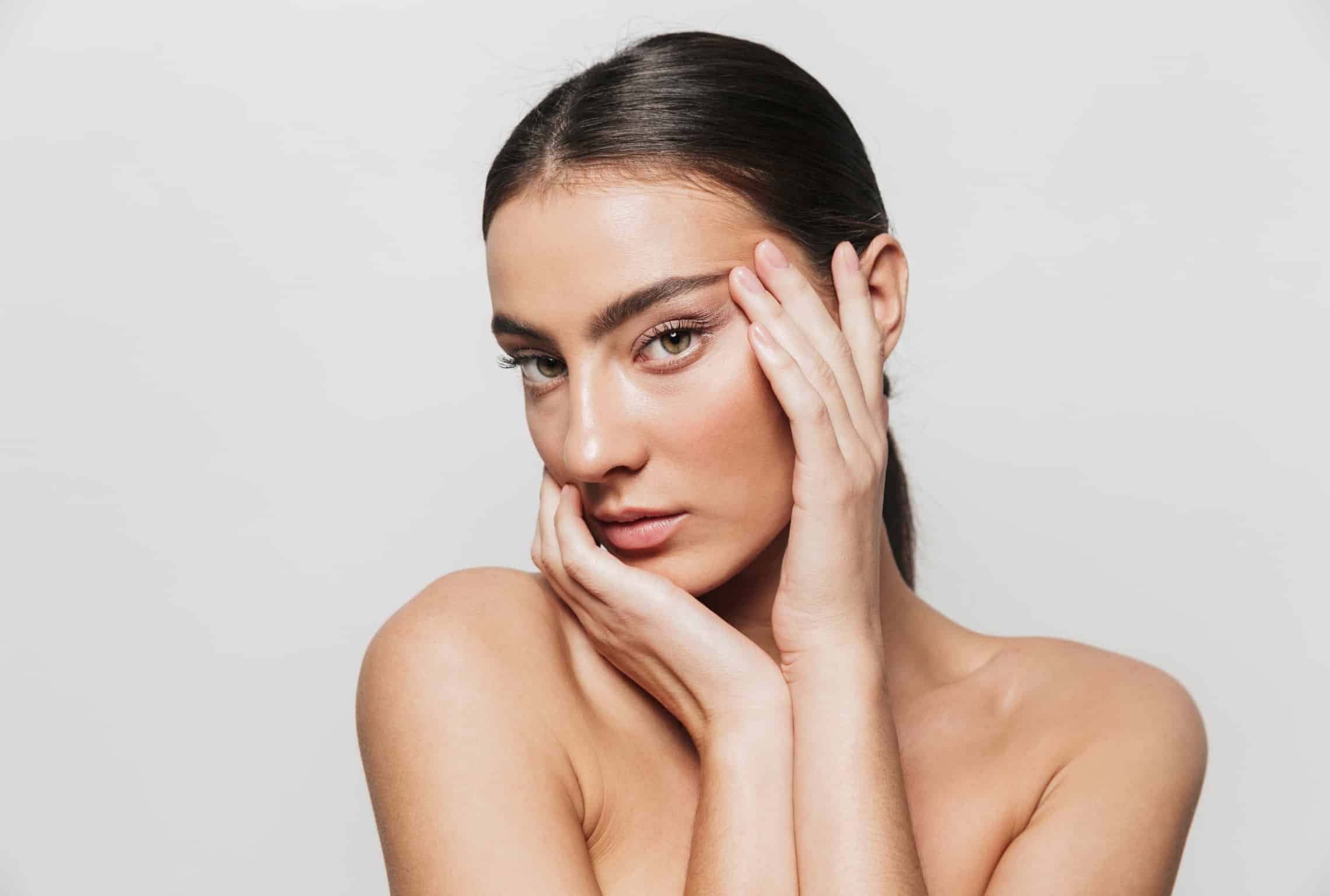Blepharoplasty is an eyelid surgery that corrects excess skin and/or fat of the upper or lower eyelids. This eyelid operation can be performed alone or simultaneously with a rhinoplasty or a lower facelift.
Blepharoplasty: eyelid surgery
Blepharoplasty, an aesthetic surgery of the eyelids, offers various solutions to correct imperfections. Several types of this procedure, also known as eyelid surgery, exist, each adapted to specific issues, thereby improving the aesthetic of the gaze.

What is blepharoplasty ?
Is blepharoplasty right for you?
Blepharoplasty is indicated in cases of :
- Drooping eyelids
- Excess skin on the eyelids
- Visual discomfort at the end of the day with a sensation of heavy eyelids
- Difficulty applying eye makeup, especially eyeliner
- Bags under the eyes
- Hollow eyes
- Tired-looking eyes even though you feel full of energy.
The main cause of drooping eyelids is age with the accompanying skin laxity. But age is not necessarily a criterion for surgery; heredity is an important factor to consider. Some patients have drooping eyelids as early as 30 years old or significant bags under the eyes from a young age.
Recommendations before undergoing blepharoplasty
Before opting for blepharoplasty, it is important to follow some preoperative instructions to optimize the operation’s results:
- Stop smoking at least 2 weeks before and 2 weeks after the intervention. Smoking reduces blood flow, which can delay healing.
- Avoid taking certain medications like anticoagulants or anti-inflammatories as they increase the risk of bleeding.
Different types of blepharoplasty
Different types of blepharoplasty exist, each addressing different issues:
Upper blepharoplasty
Upper blepharoplasty or eyelid lift is a surgical procedure that aims to correct drooping eyelids. This surgery removes excess skin and fat from the eyelids, rejuvenating the gaze. It is a relatively simple and quick procedure that provides satisfactory results.
Lower blepharoplasty
Lower blepharoplasty is a surgical procedure that reduces bags under the eyes. It can also be combined with a lower eyelid lift to remove excess skin from the lower eyelids. This surgery mainly aims to correct drooping eyelids. It can be performed alone or in conjunction with upper blepharoplasty.
Additive blepharoplasty
Additive blepharoplasty, called lipofilling or lipostructure of the eyelids, involves concealing aging marks around the eye by adding fat taken from the thighs or knees. This new technique restores volume to the eyelids, giving them a younger appearance. This technique is often complementary to upper blepharoplasty to treat a hollow eye simultaneously.
Procedure of eyelid surgery
Blepharoplasty is an eyelid operation performed under local or general anesthesia. It lasts about 45 minutes under local anesthesia for upper blepharoplasty and 2 hours for combined upper and lower blepharoplasty. If both upper and lower surgeries are planned, it is generally done under general anesthesia. If you wish, and after discussion with your practitioner, eyelid surgery can be performed simultaneously with another aesthetic operation such as rhinoplasty or lower facelift.
The procedure of blepharoplasty is simple: during the operation, excess skin and/or fat is removed from the upper or lower eyelids. Sutures are then made and removed after 7 days.
Postoperative course of blepharoplasty
The postoperative course of blepharoplasty is generally not very painful, and the side effects are temporary. You may experience some bruising and swelling around the eyes that usually disappear in 1 to 2 weeks. It is important to follow Dr. Lyor HANAN’s instructions to promote good healing.
Additionally, it is essential to:
- Apply postoperative care such as eye bandages, cold compresses, and eye drops.
- Follow rest instructions and avoid straining your eyes for a few days.
- Avoid smoking to optimize healing.
Expected results after eyelid surgery
The results of blepharoplasty are visible immediately after the procedure and improve over the weeks. Indeed, the scars are generally very discreet and gradually fade. The results of blepharoplasty are permanent: you will regain a more awake and rested gaze.
Prices of blepharoplasty with Dr. Lyor HANAN
The price of blepharoplasty varies depending on the type of intervention needed. As an indication, the price of upper or lower blepharoplasty ranges from 16,000 to 30,000 AED.
Frequently asked questions about blepharoplasty
What is the difference between dark circles and bags under the eyes?
Dark circles appear as a dark area under the eye due to a hollow under the orbit. Bags, on the other hand, form a swelling under the eyes due to excess fat.
Is eyelid surgery painful?
Blepharoplasty is always performed under anesthesia, so no pain is felt.
Are blepharoplasty scars visible?
Depending on the surgery performed, the incision is made in the upper eyelid crease or inside the lower eyelid. In both cases, the scars are invisible.
Are there any contraindications to blepharoplasty?
The only contraindications are severe eye pathologies (ocular hypertension, cornea graft, etc.)


